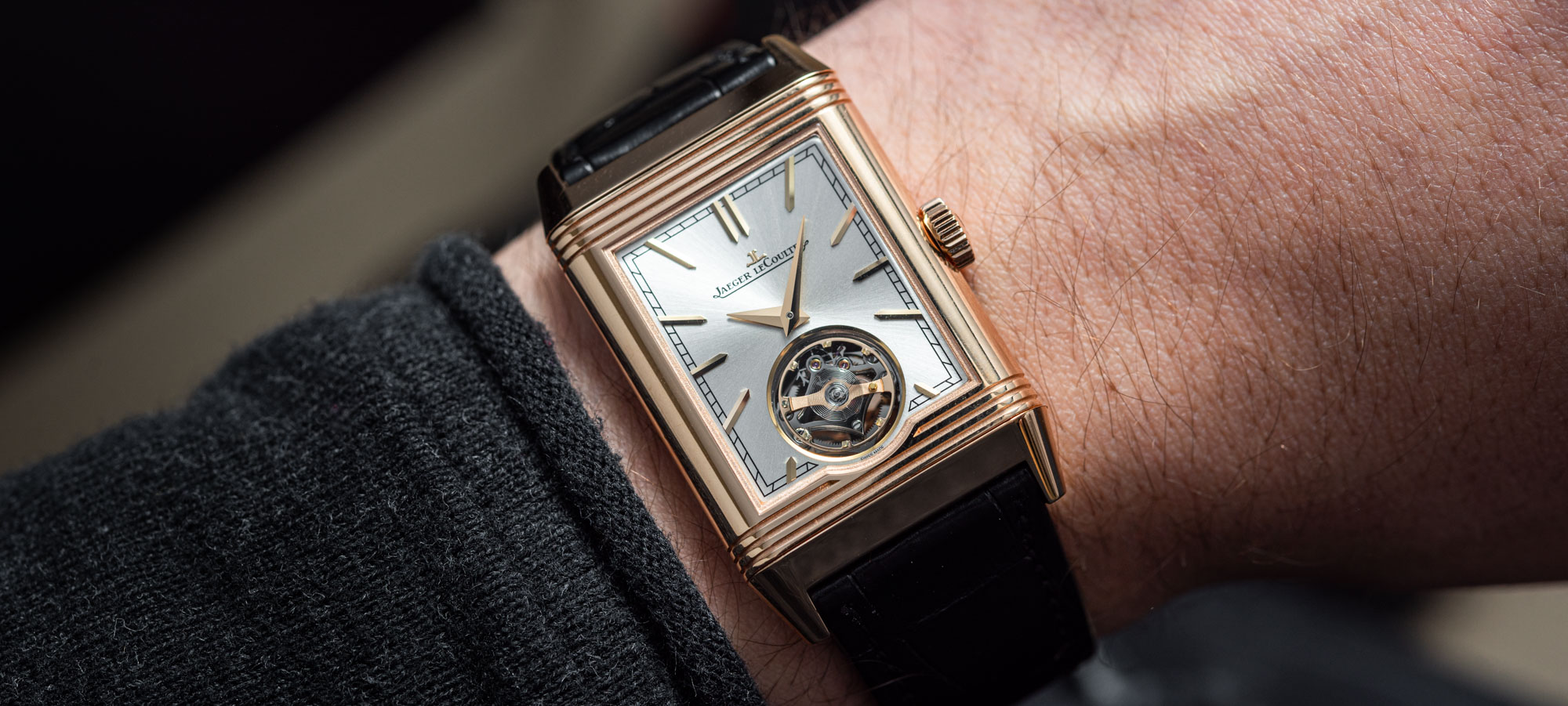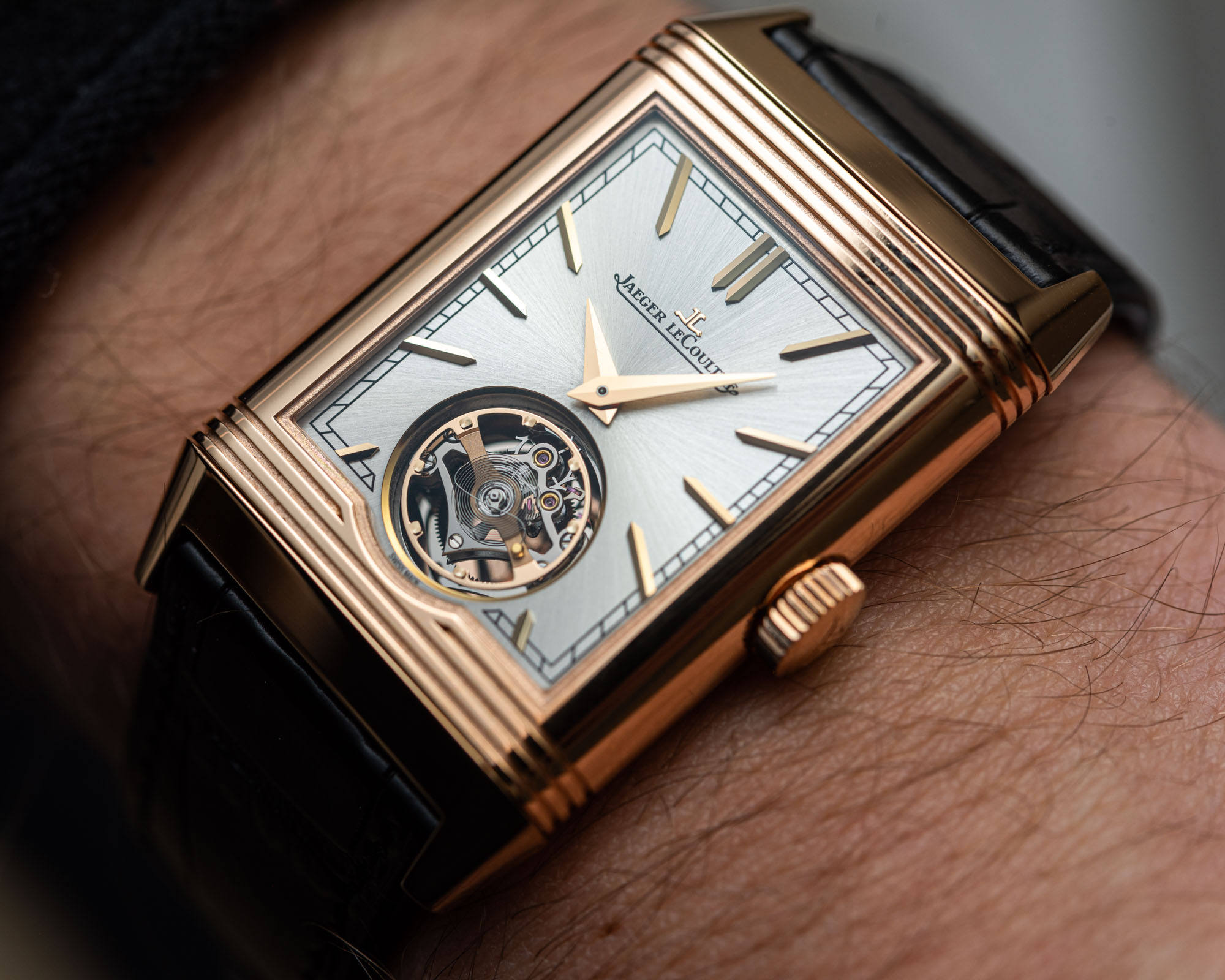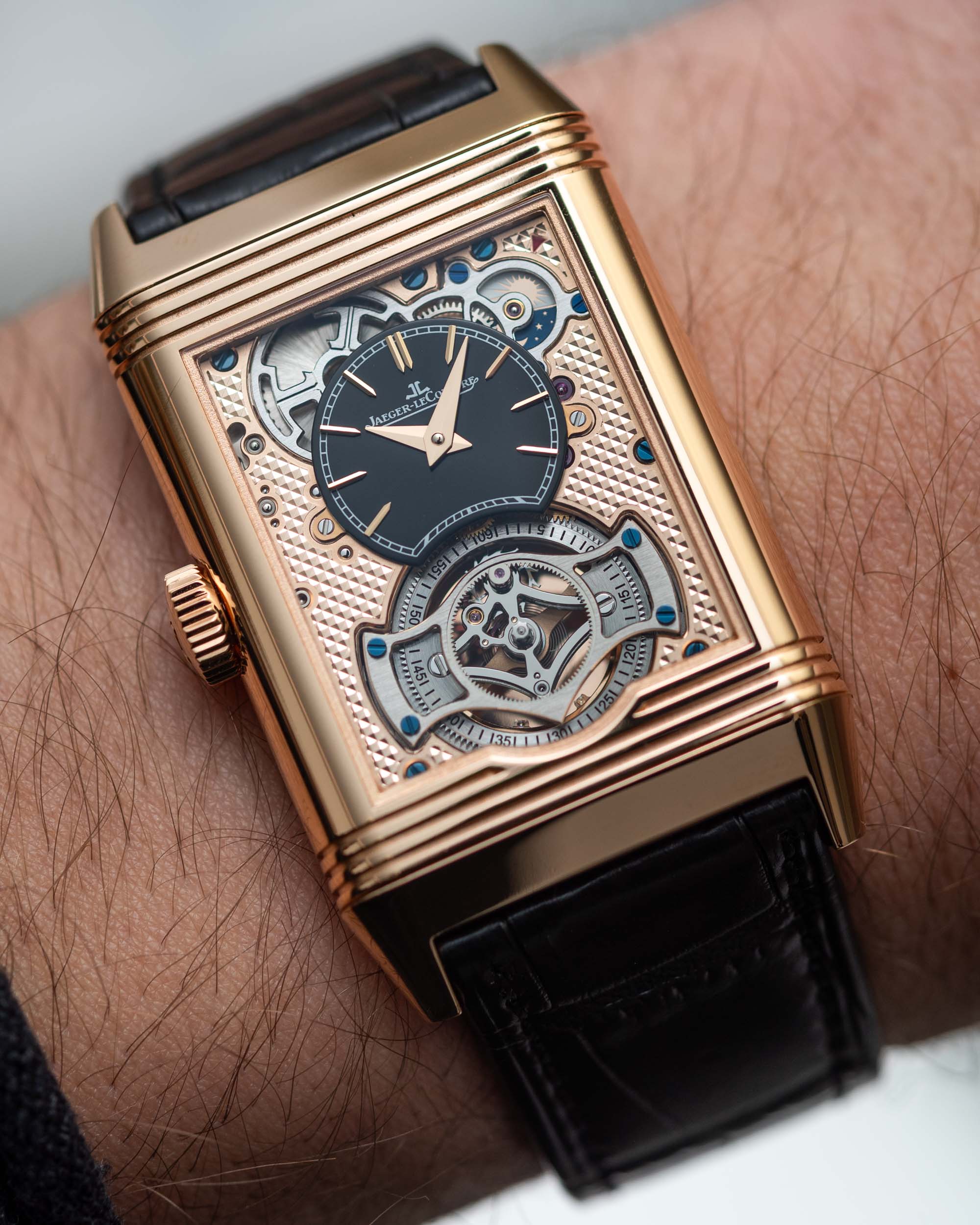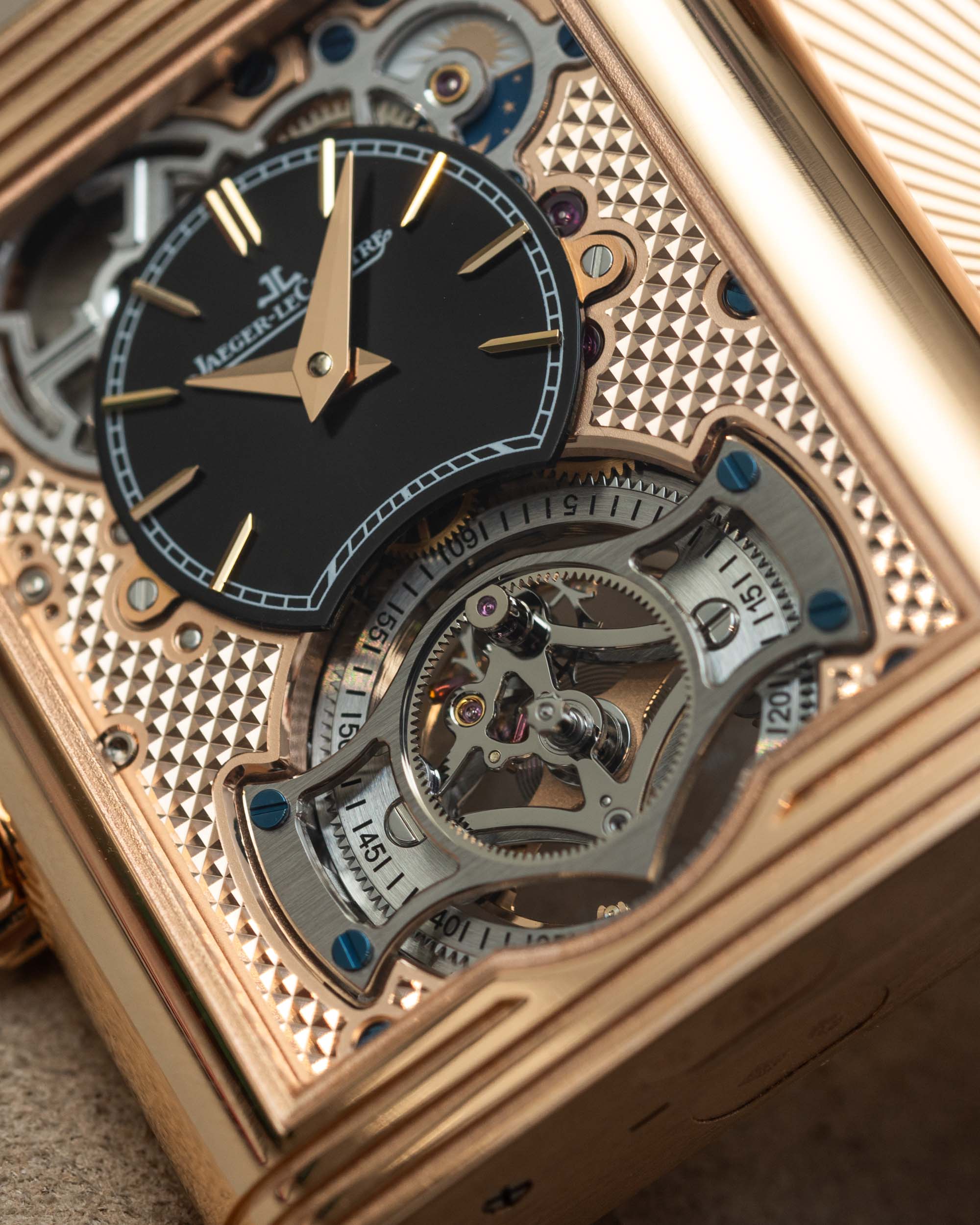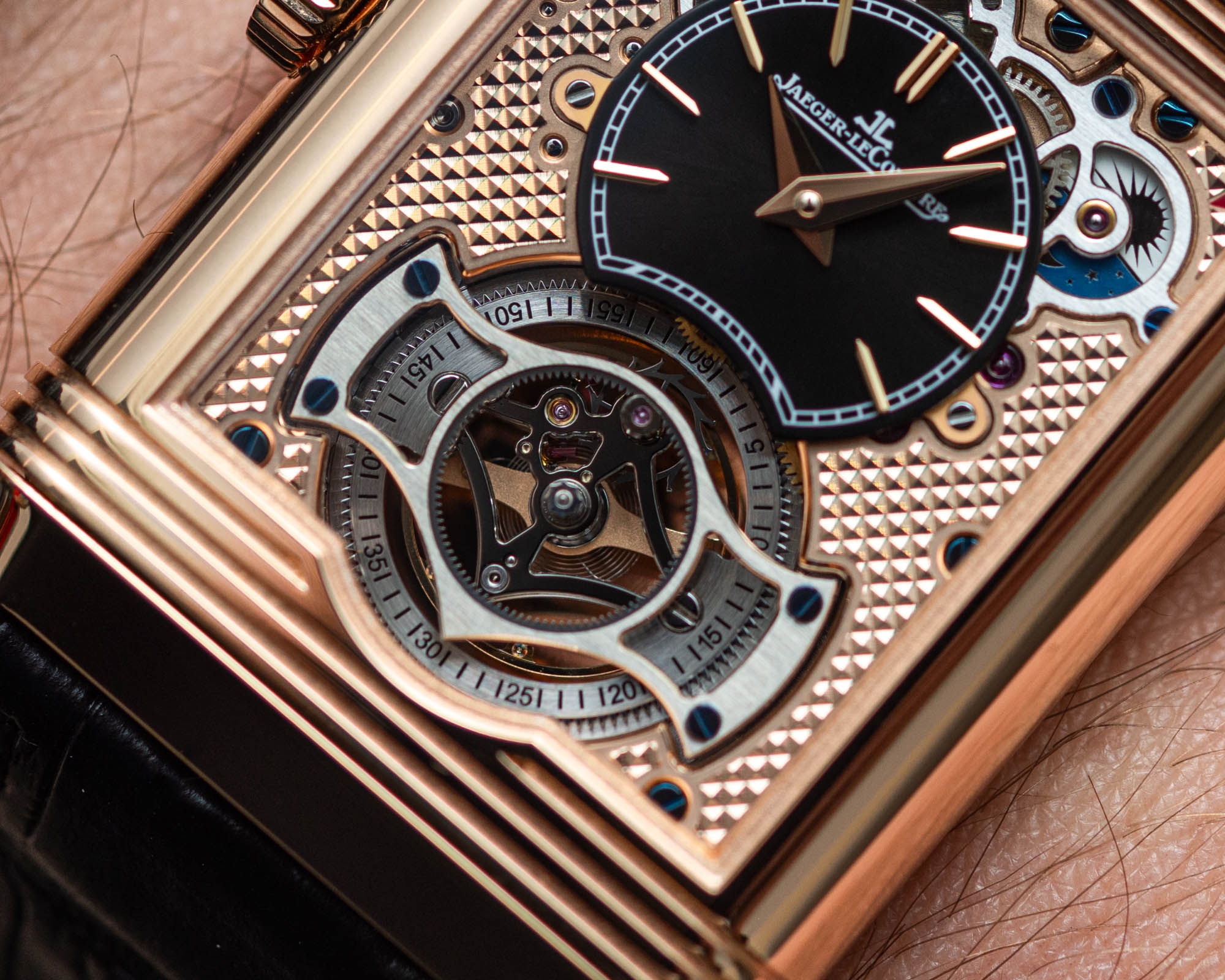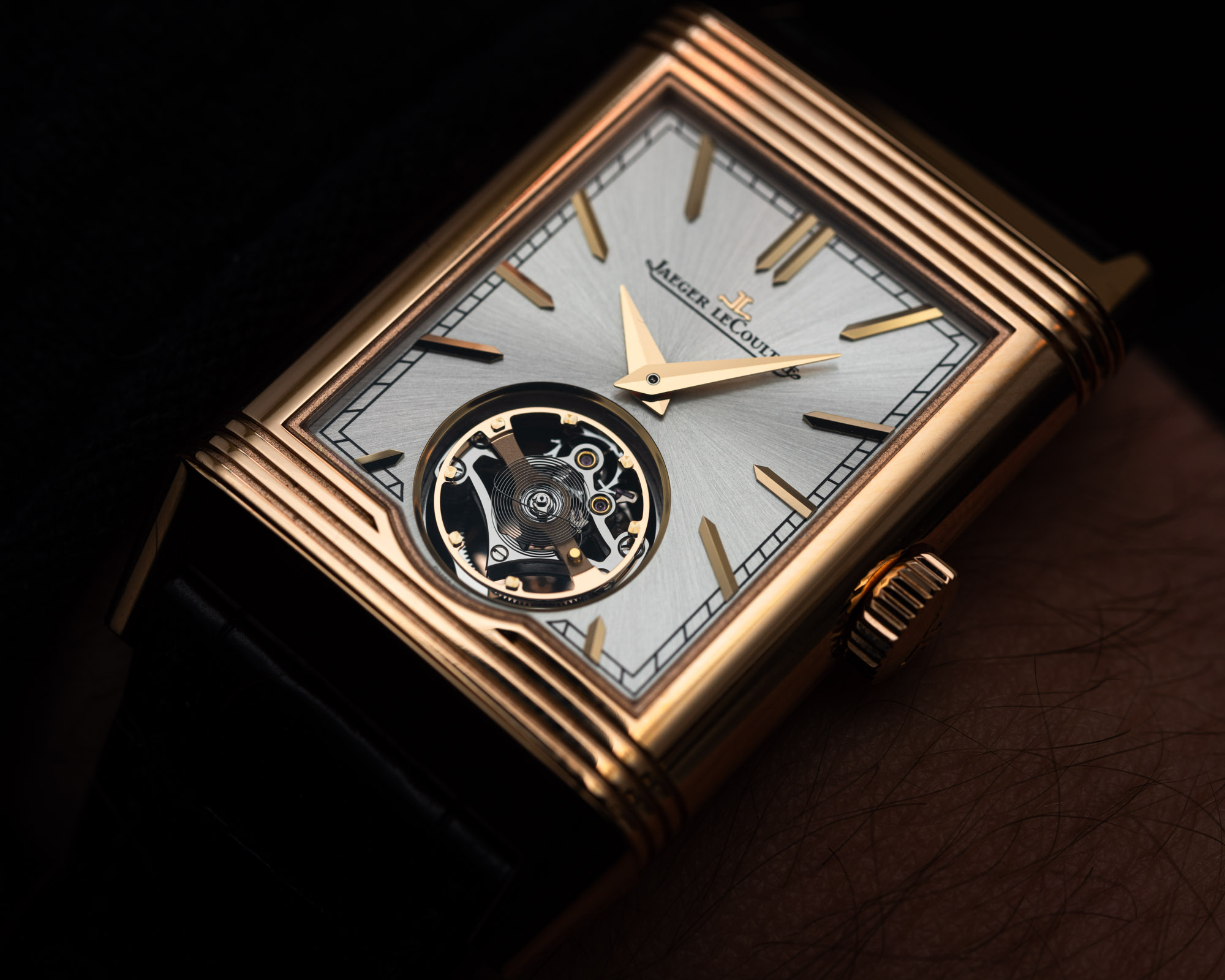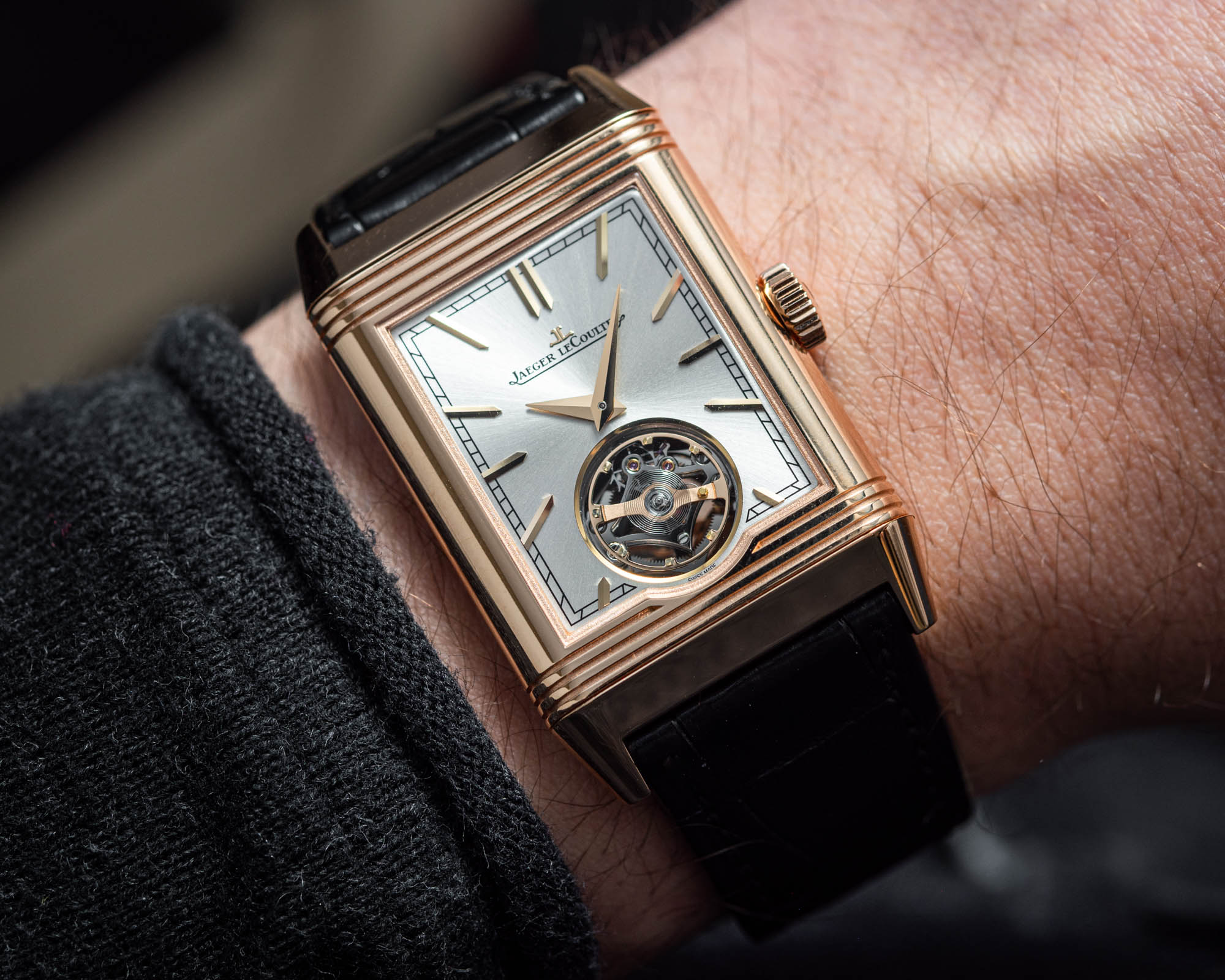
There’s no two ways around it: The Jaeger-LeCoultre Reverso Tribute Duoface Tourbillon is an epic watch. Unlike the Gyrotourbillons, Triptyques, and even Quadriptyques from Le Sentier, this decidedly less complicated Reverso remains thin and so it presents respectable complexity with a level of grace one should expect from a legacy watchmaker.
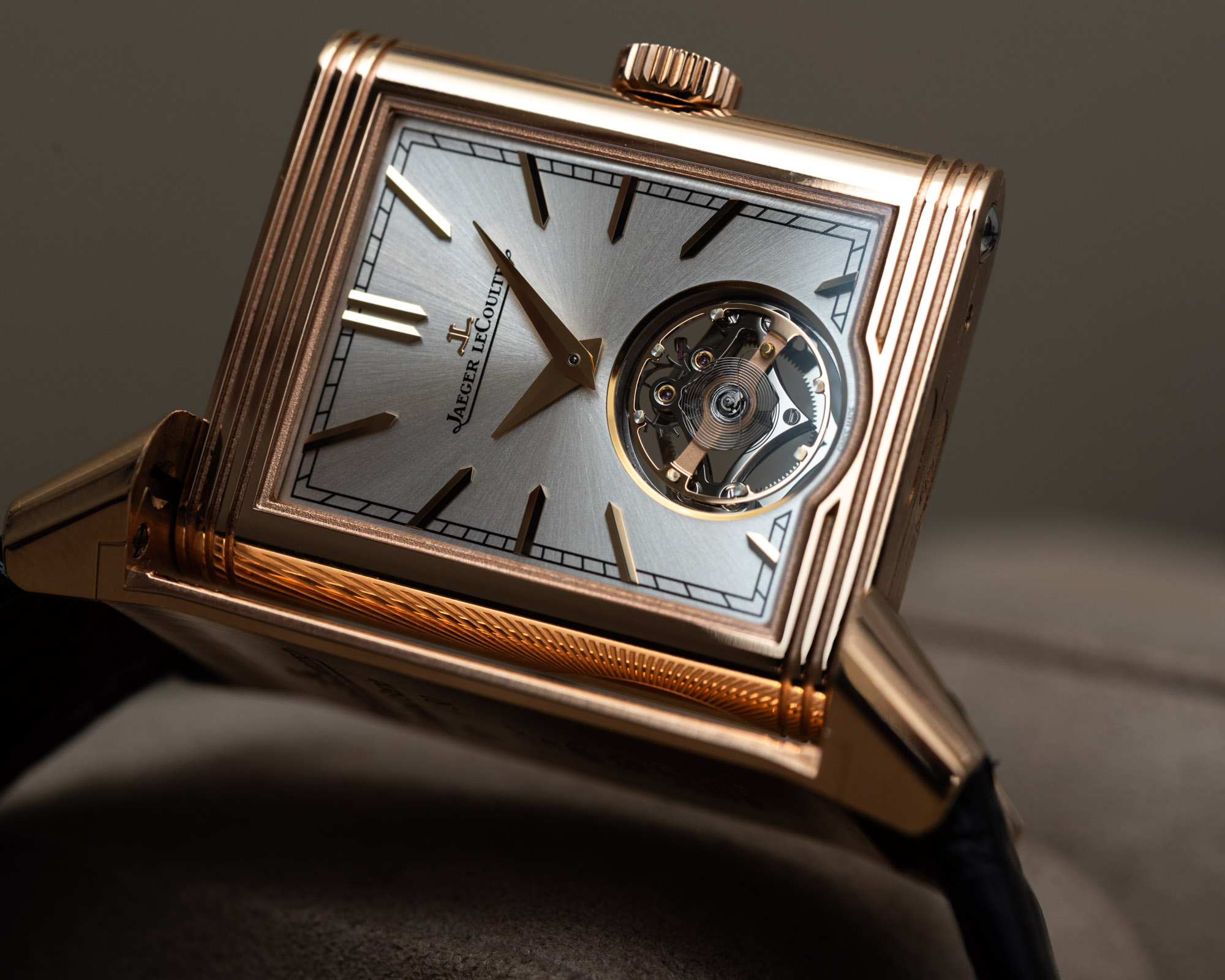
A thin, visually and technically complicated watch is a real tour-de-force, and it’s something Jaeger-LeCoultre does well — even though, again, we have seen it enter the world of limitless case dimensions just to be able to cram ever more ridiculous numbers of displays and complications into a watch. I have said on the ABTW podcast and in articles in the past, that once a watch moves beyond the spatial limitations of graceful wearability, it becomes rather pointless and also technically a whole lot less impressive, at least in my book. Entering the Jaeger-LeCoultre booth at Watches & Wonders Geneva 2023 as one of my first meetings that long week, I didn’t know what to expect — and, much to my joy and relief, the new Jaeger-LeCoultre Reverso Tribute Duoface Tourbillon watch was the positive surprise waiting for me.
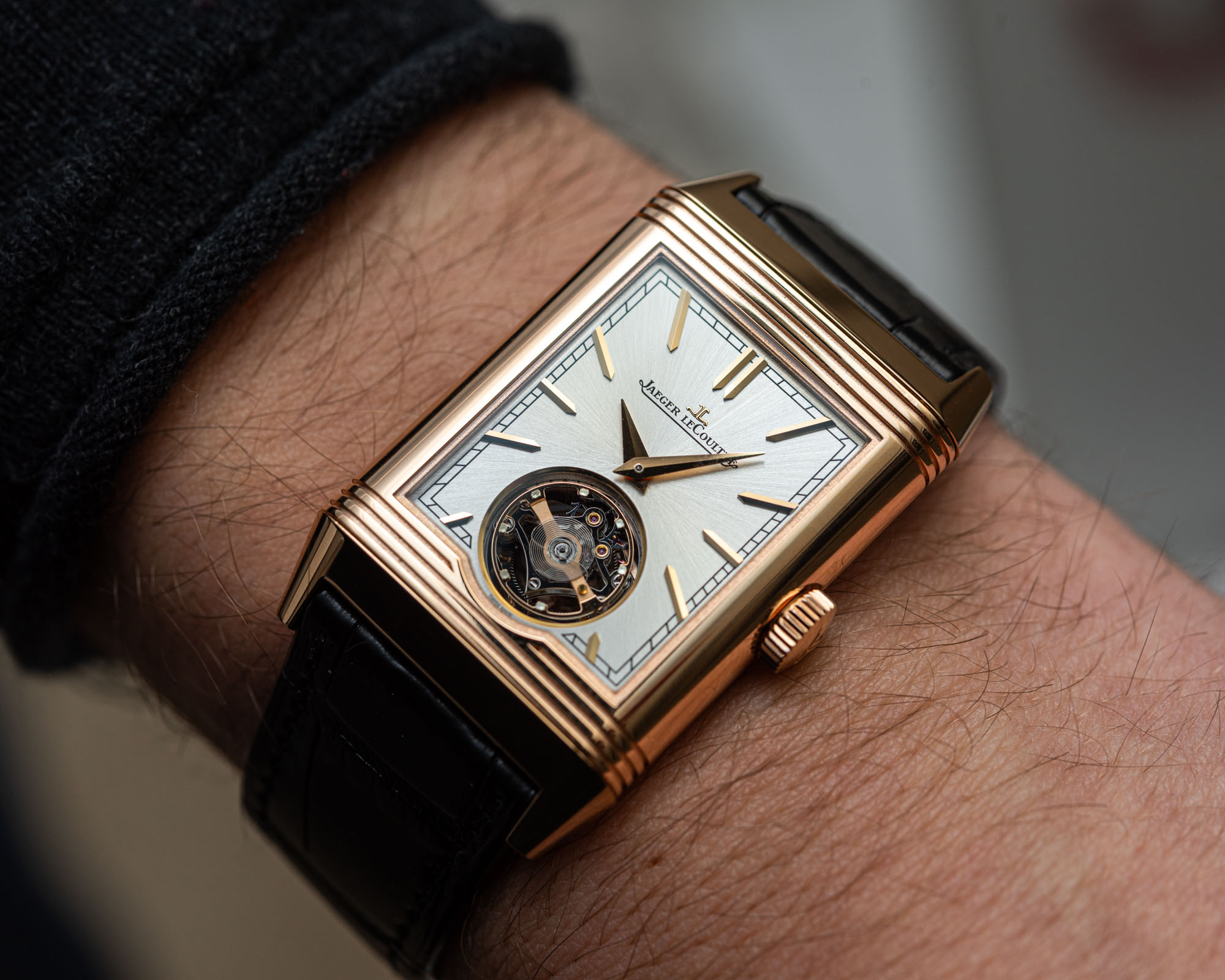
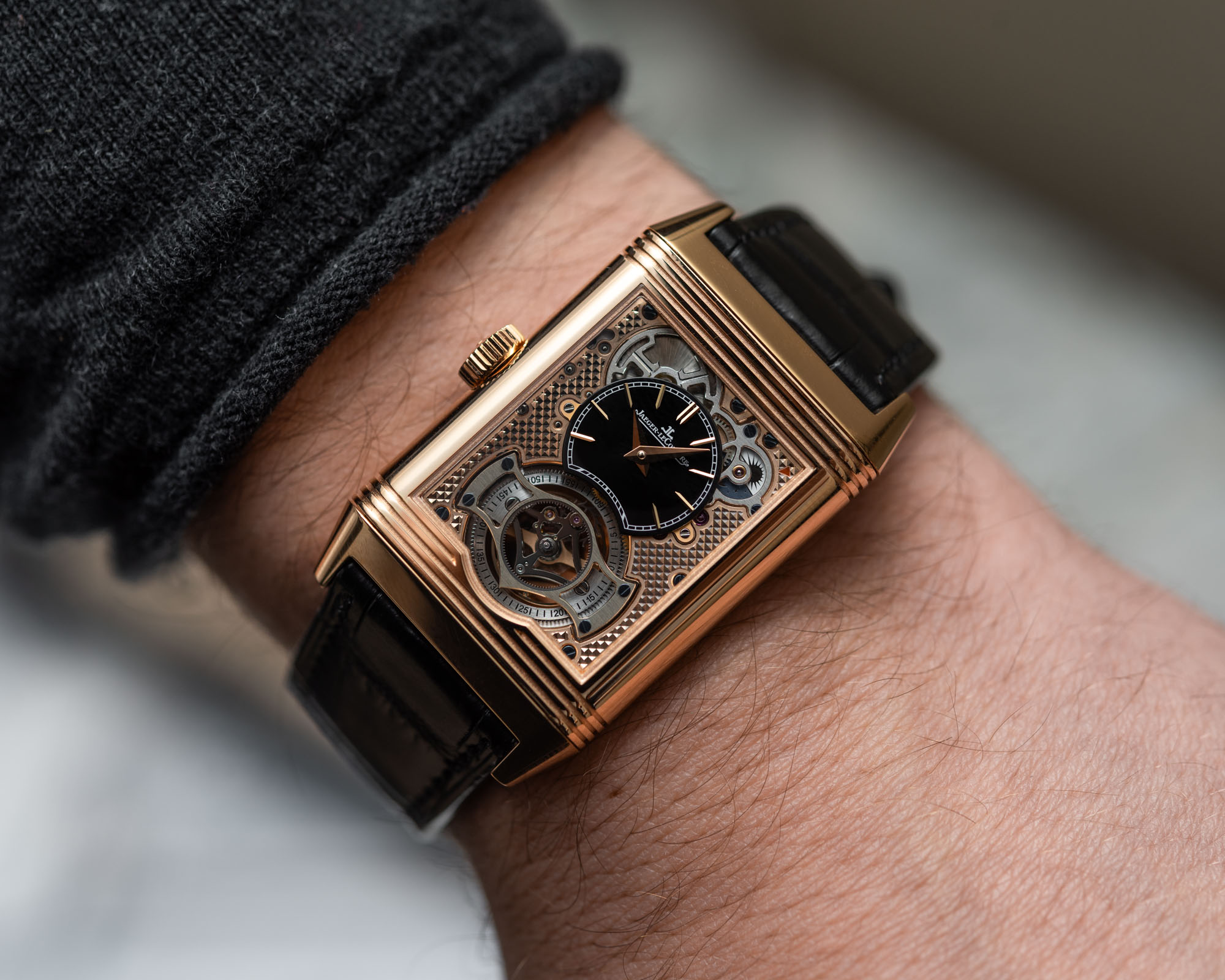
In 2018, we debuted the Reverso Tribute Tourbillon Duoface watch and with it the shining new Jaeger-LeCoultre Manufacture Calibre 847 that brought the flying tourbillon into the Reverso Duoface for the first time. This hand-wound movement is just 3.9mm thick and a far cry from the grande complication monsters, but it nevertheless allows for the indication of the hours, minutes, and seconds, has a tourbillon on display on both sides and packs a second time zone on the “Verso” side with an AM/PM indicator neatly crammed into the top right corner of the hobnail pattern dial. This display can be adjusted backward, as well as forward, in one-hour increments, using the crown, which is an elegant solution.
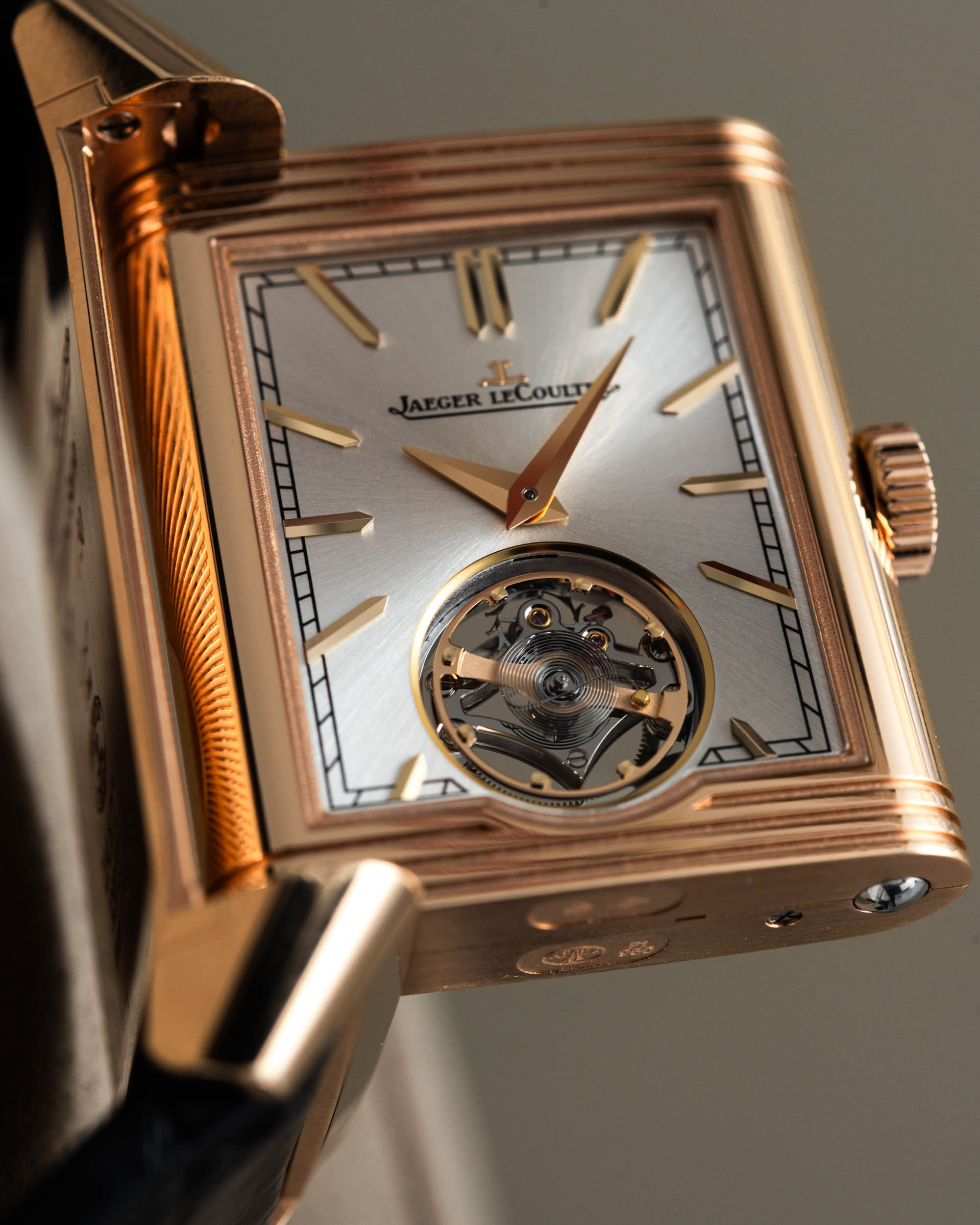
It is from here on that I should urge you to zoom in on these hands-on photos of the Jaeger-LeCoultre Reverso Tribute Duoface Tourbillon watch to fully appreciate the construction and execution of the flying tourbillon. As I explained in the debut article in 2018, “a flying tourbillon ‘flies’ because it’s secured only from underneath – with ‘underneath’ being a well-understood spot in 99% of all watches ever made. In a Reverso, that is of course a matter of seconds to be changed entirely, with the flipping of the case.”
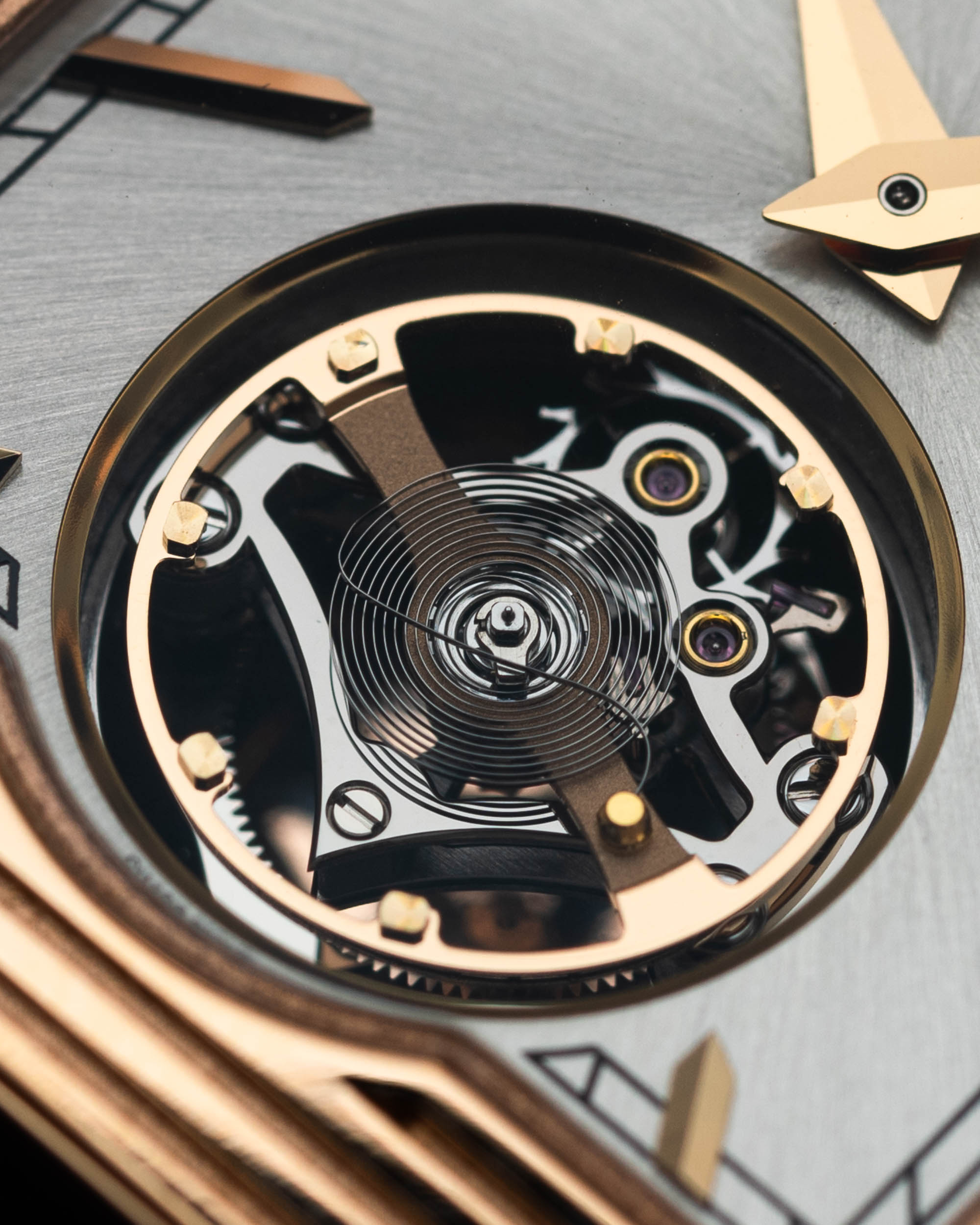
As you can see above, on the “Recto” or regular face, that places the crown at 3 o’clock, we find a silvered grey, sunray-brushed dial that covers the entire front except for the open-heart cut-out to reveal the tourbillon (fun fact, the brand that invented and coined the open-heart execution was Frederique Constant). This, here, is also the “flying” side of the tourbillon in the sense that the tourbillon is not secured by a bridge or other structural element from above, displaying it in all its glory. Also interesting is that the cage in this instance does not extend laterally beyond and vertically over the balance wheel, but rather the balance wheel and its overcoil hairspring sit right on top. A mirror-polished cage shines through from behind, rightfully begging for attention.
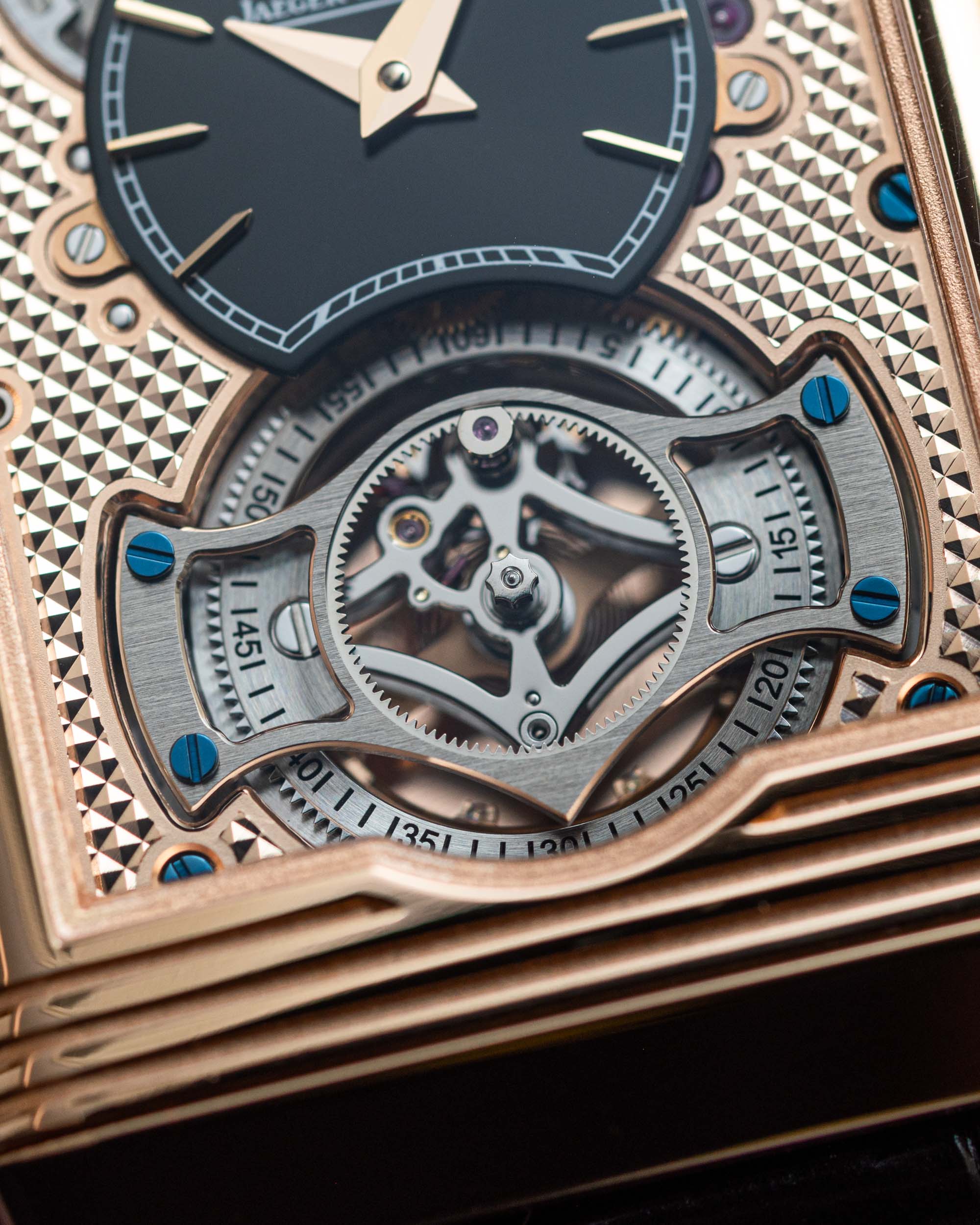
On the flip side, “Verso,” in Reverso-speak, one is invited to discover the massive, open-worked bridge that secures the 62-part tourbillon assembly and all of its 0.455-gram total weight. It could be argued that at this price point, well into six figures, some so-called interior angles would be welcome if nowhere else on the movement, then at least here on this large, arrow-tipped bridge. Instead, the two more or less rectangular cutouts on the two sides have rounded-off corners, clearly indicating that they were cut by a CNC machine and have not been filed by hand to comply with haute horlogerie standards. Elsewhere, we will find spectacular traits of craftsmanship, and the beveling on these parts has certainly been refined by hand, but not to an extent that would have been possible to achieve.
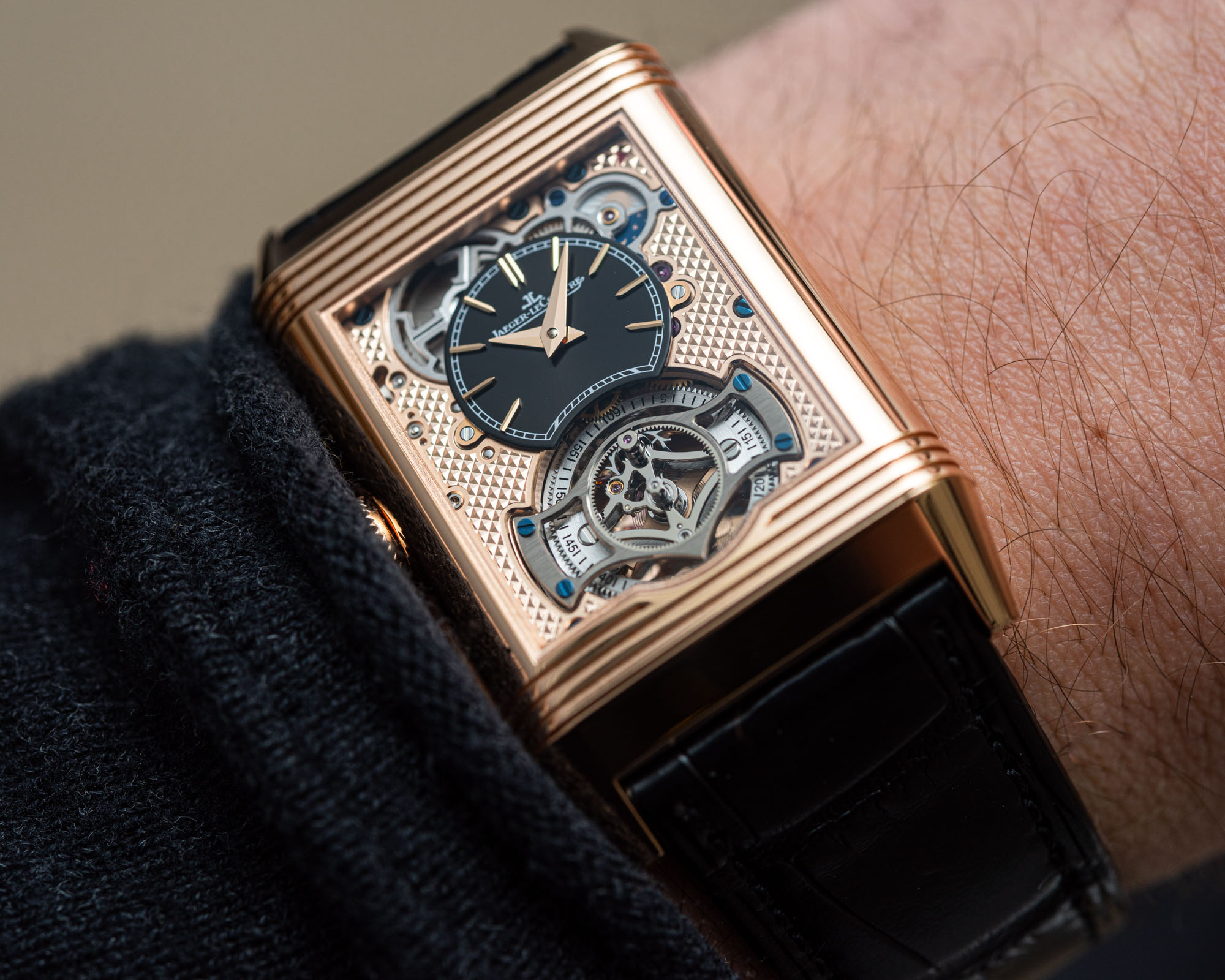
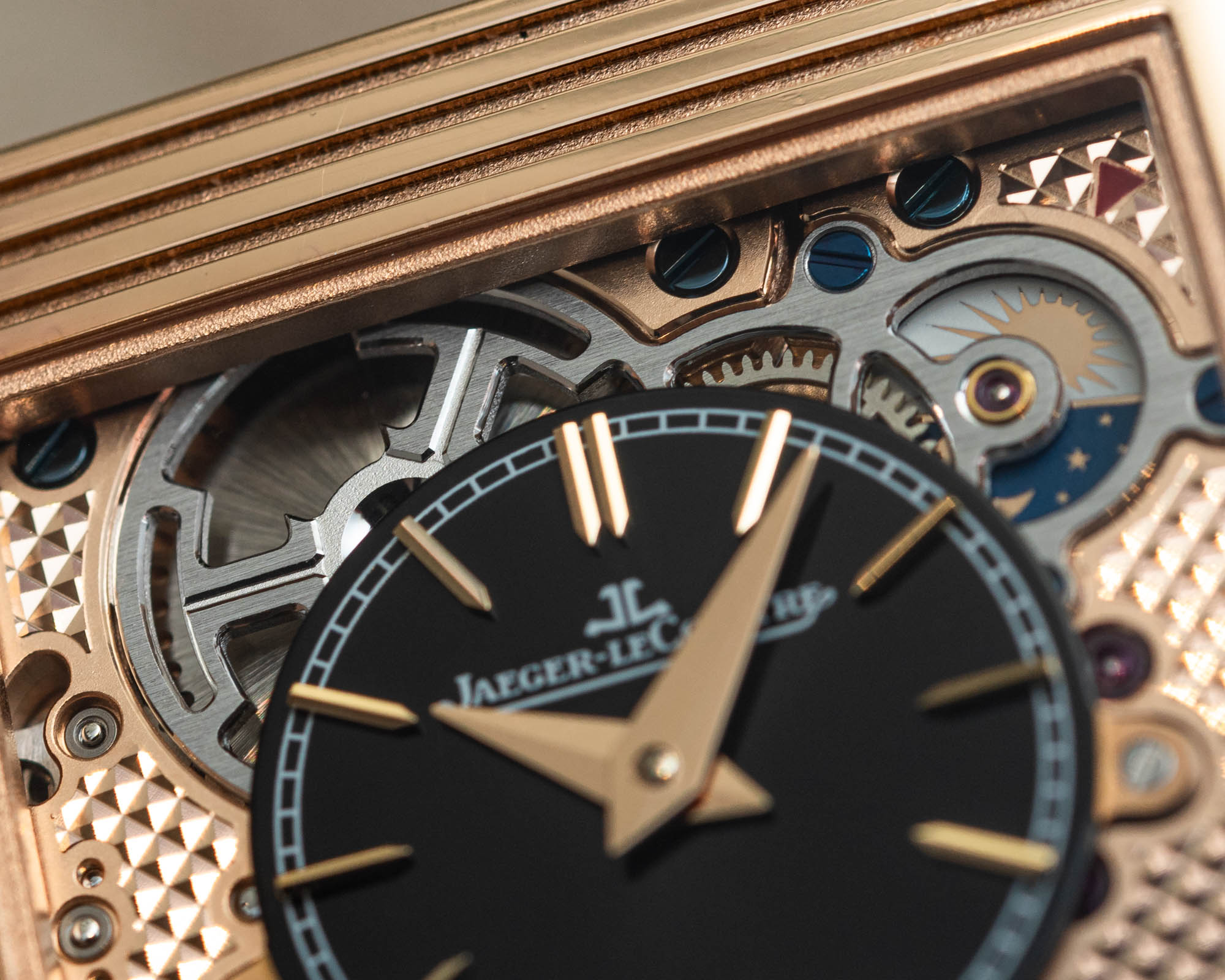
Still, on this flipside, we find golden bridges decorated with guilloché done at the Atelier des Métiers Rares of Jaeger-LeCoultre. Produced over six hours, this hobnail pattern, also known as “Clous de Paris,” is a dramatic texture that works well with the rectangular middle case and strong angularity of the lug structure of the Reverso. The time display is much smaller here, allowing one to appreciate both sides of the subdial vs. full dial debate, and likely find that they both have their own merits. Near the top, an openworked mainspring barrel is on show with the “JL” logo making an appearance. The power reserve is just 38 hours, a measly spec that is given a pass in recognition of the compactness of the caliber, as well as its neat additional feature of a second time zone, and large, flying tourbillon.
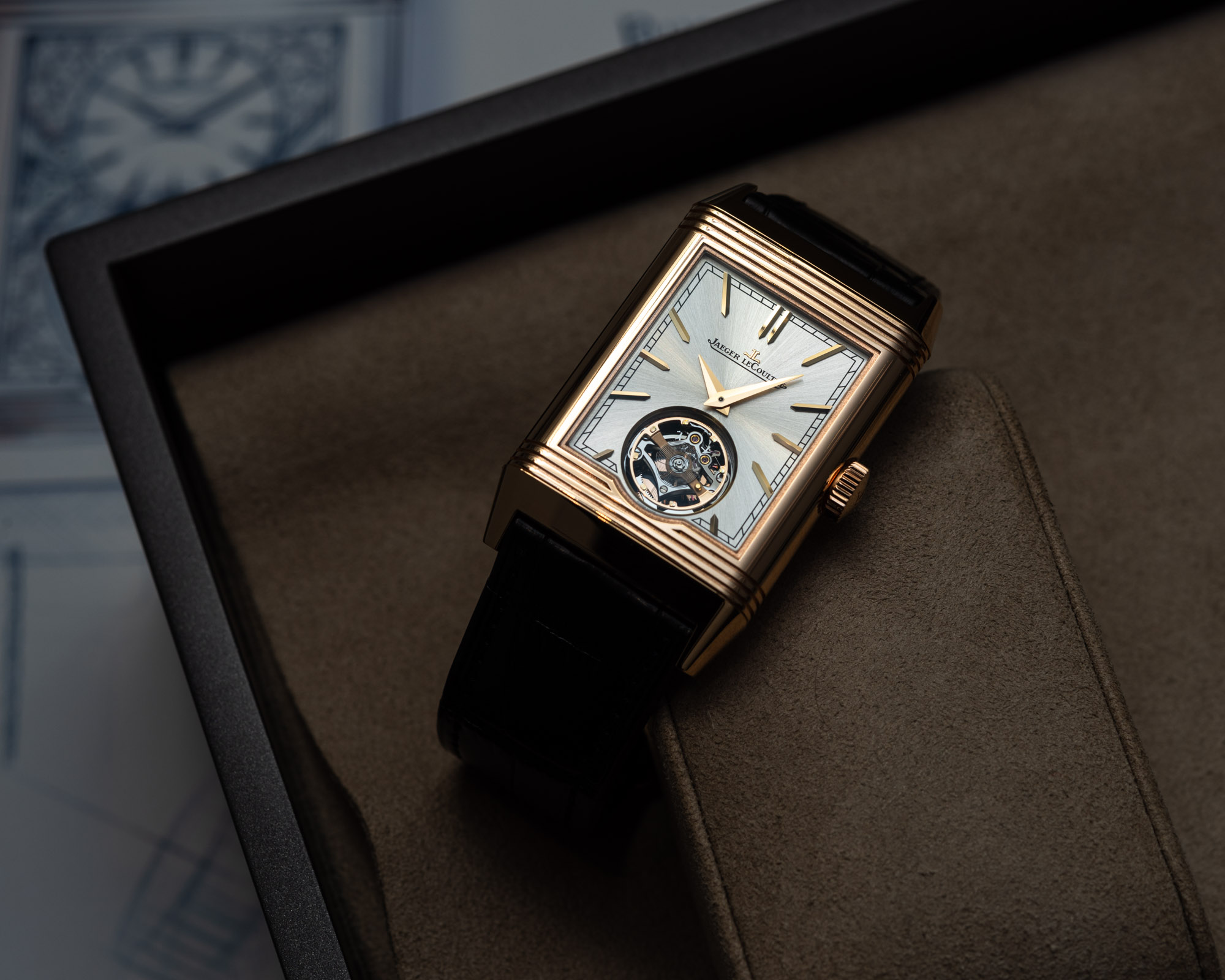
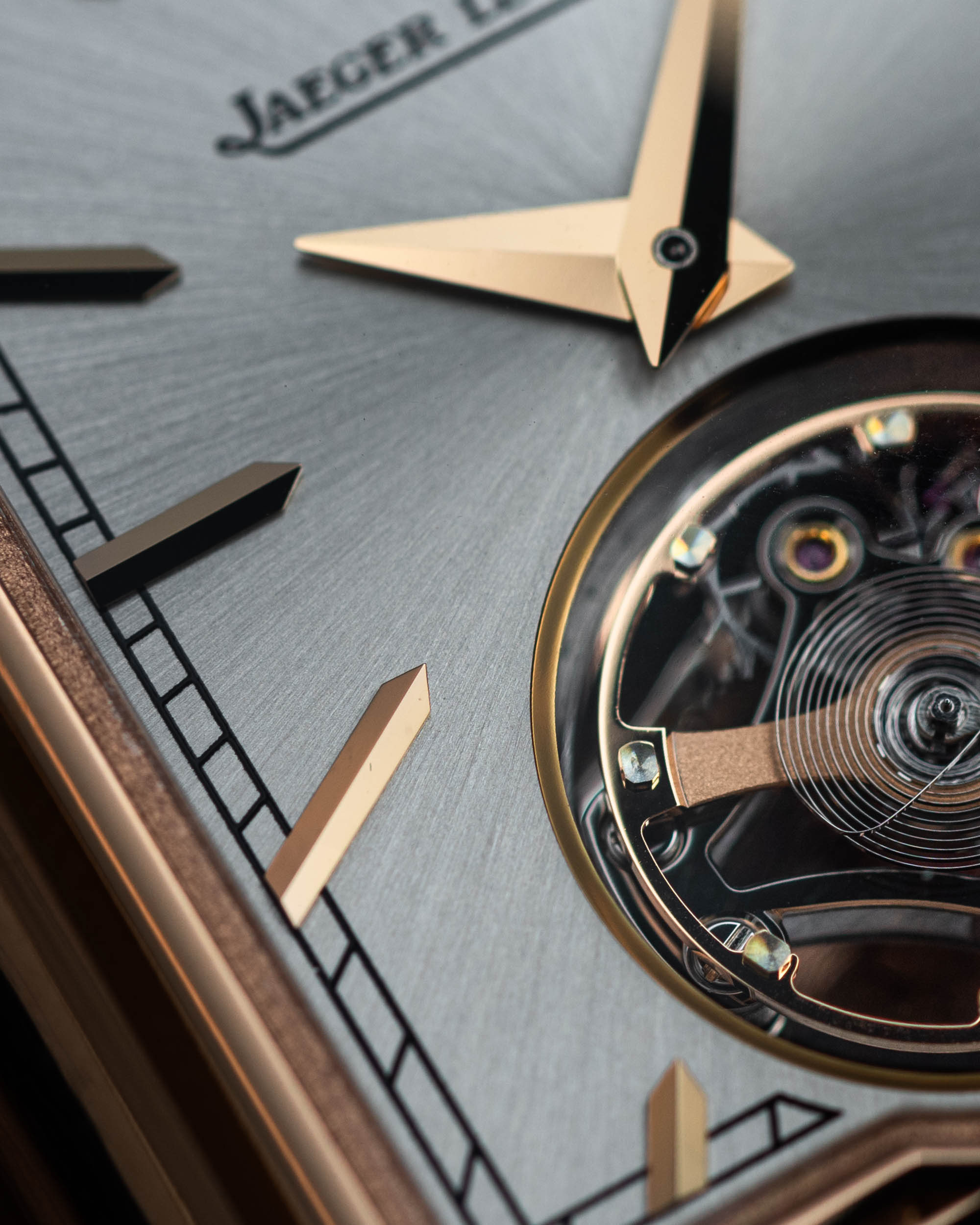
The solid dial on the Recto side is spectacular, too. It is highly reflective, as are the dauphine-style hands and baton markers. Some of the hour markers weren’t exactly clean — one can hope and indeed expect that final production pieces will be nothing short of pristine. The proportions are absolutely perfect, as the rather long, applied markers and the black railroad track print help the Jaeger-LeCoultre Reverso Tribute Duoface Tourbillon watch make a serious and seriously elegant first impression. In other words, even the less showy side of this Duoface has a larger-than-life appearance, punching way above its 45.5mm by 27.4mm figure would have you expect. The case is just 9.15mm thick, making this a truly respectable exercise from Jaeger-LeCoultre.
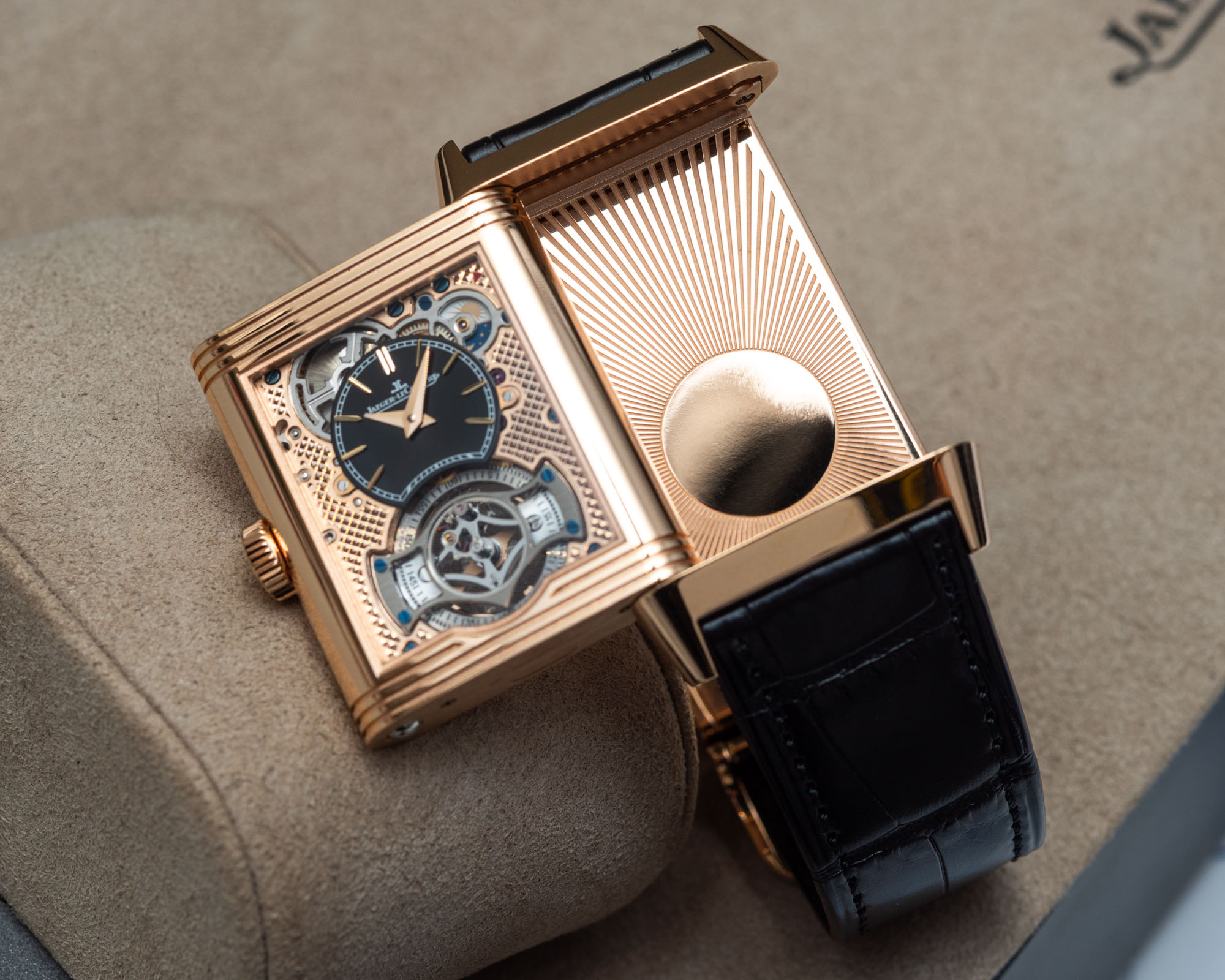
The last cool trick hidden within the Jaeger-LeCoultre Reverso Tribute Duoface Tourbillon watch is the decoration on the plate of the solid 18k pink gold main case. It has a large, sun-like circle that is polished so that it reflects light back through the tourbillon — talk about ingenious integration between movement and case! Branching out from this sun is a sunburst pattern, a name as appropriate as ever, with 232 grooves that were engraved six times over, so 1,392 times in total. Not messing up on the 1,391st cut is the real art here.
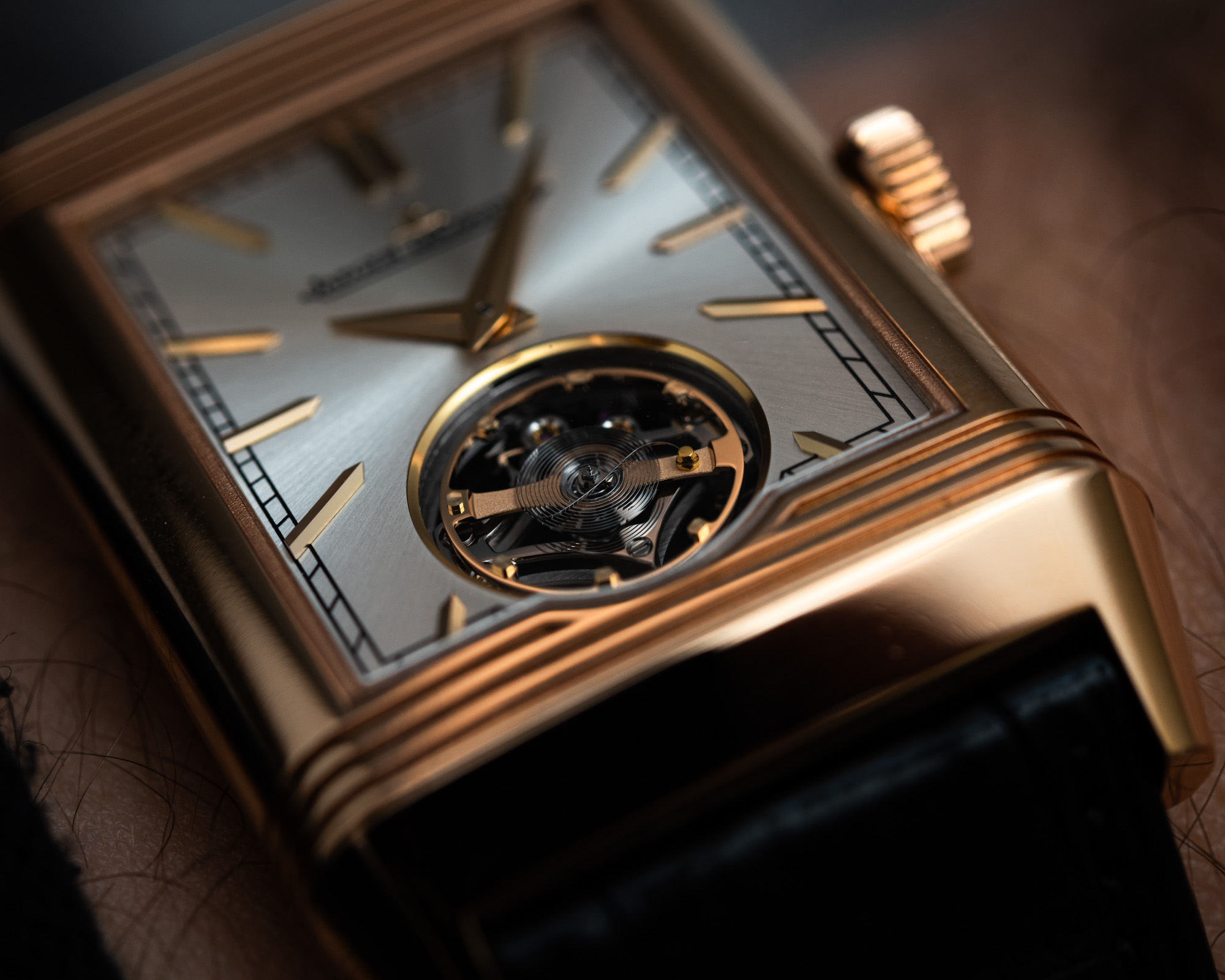
A spectacular piece of watchmaking, the Jaeger-LeCoultre Reverso Tribute Duoface Tourbillon watch comes at a price of $139,000 USD. A big chunk of money, sure, but still competitive in the realm of big-brand tourbillon watches brought to such a high level through bespoke construction and details. You can learn more at the brand’s website.

